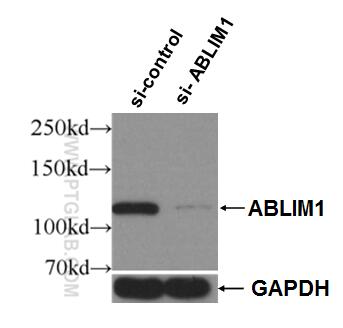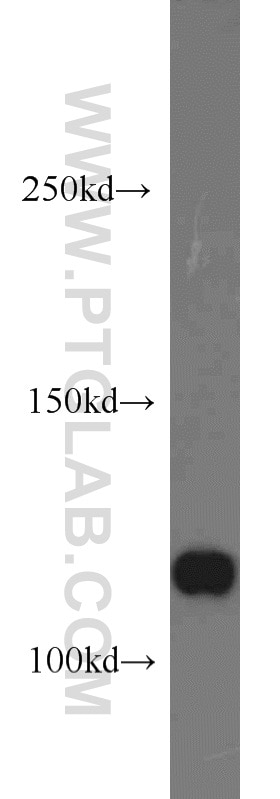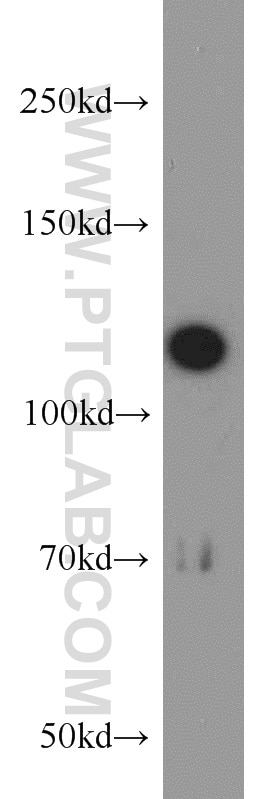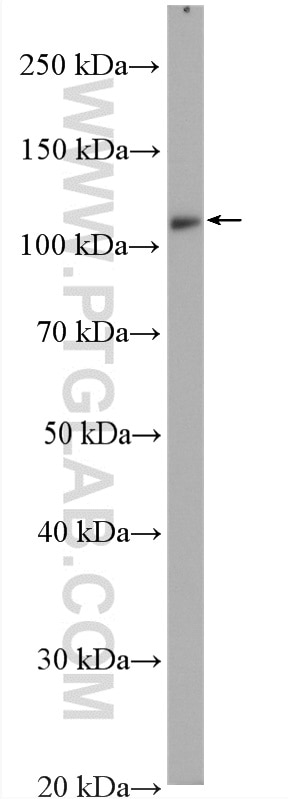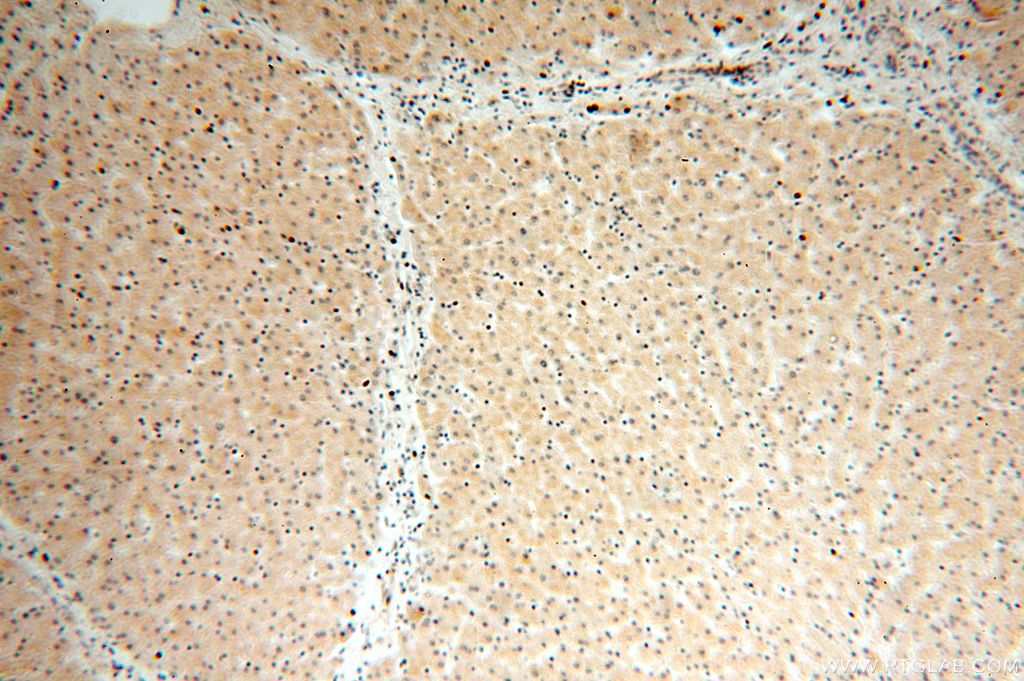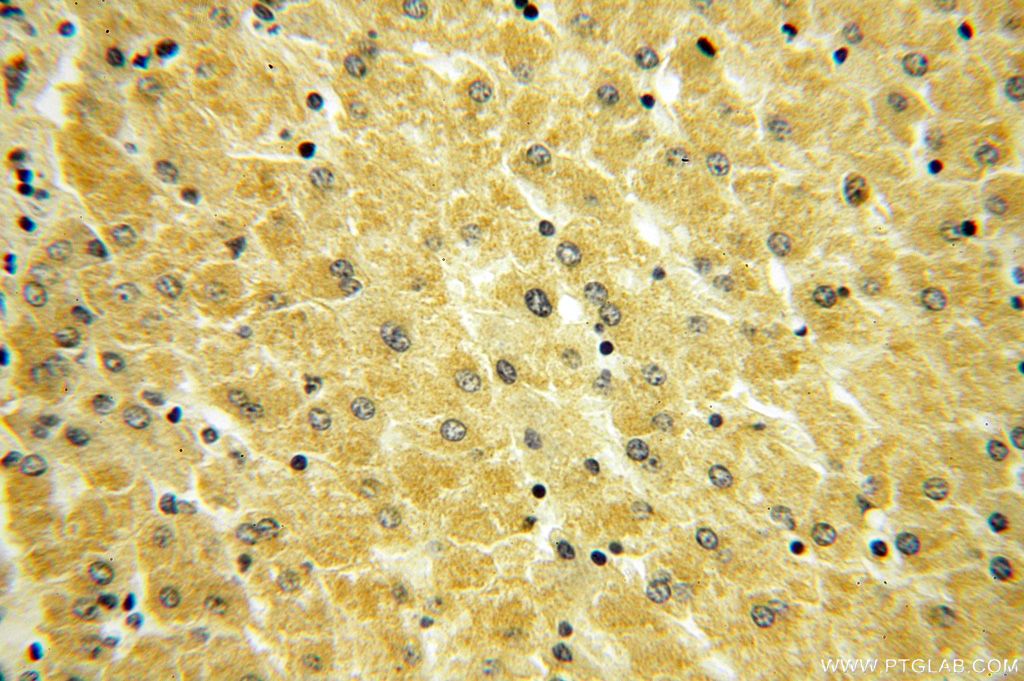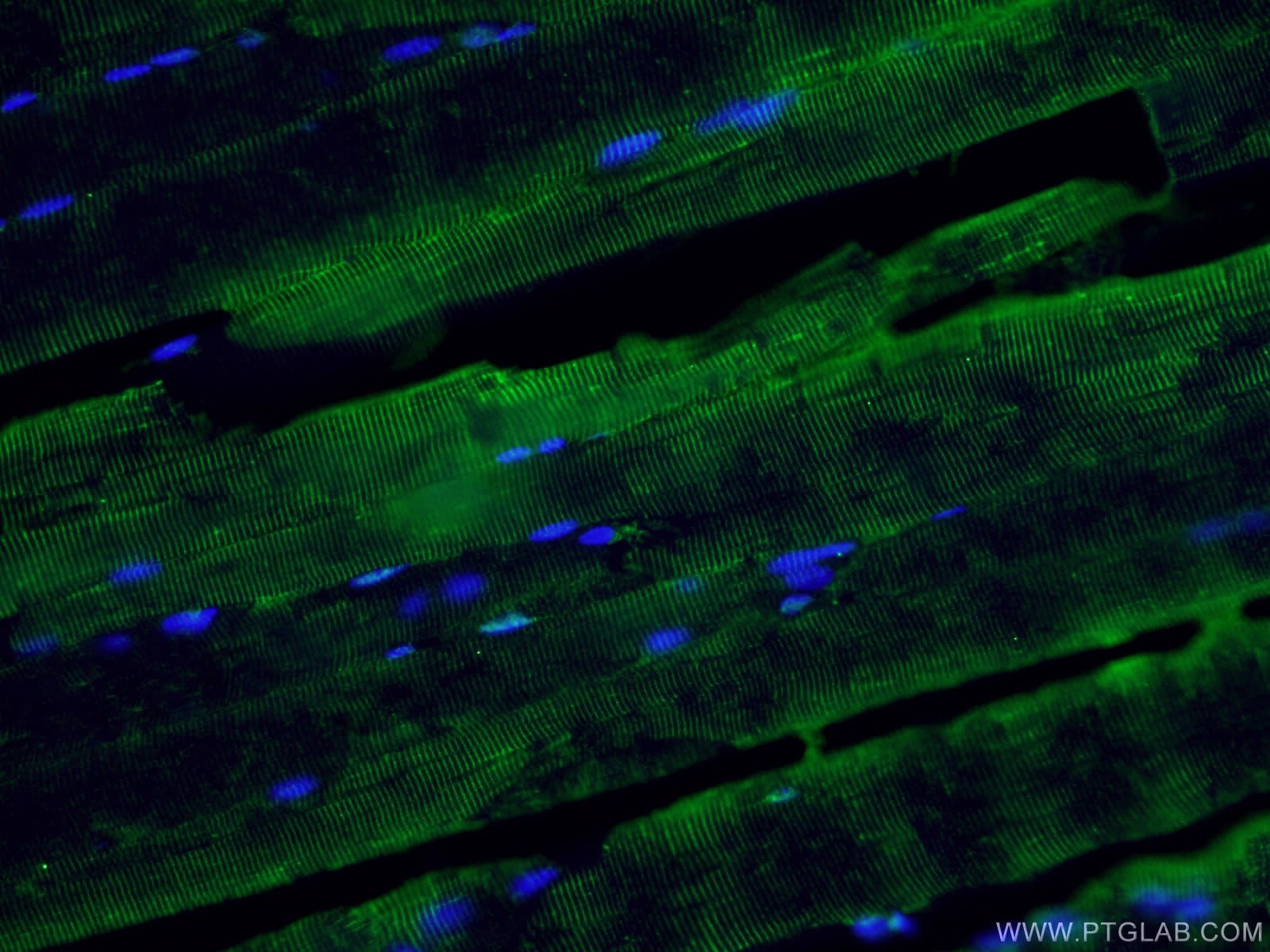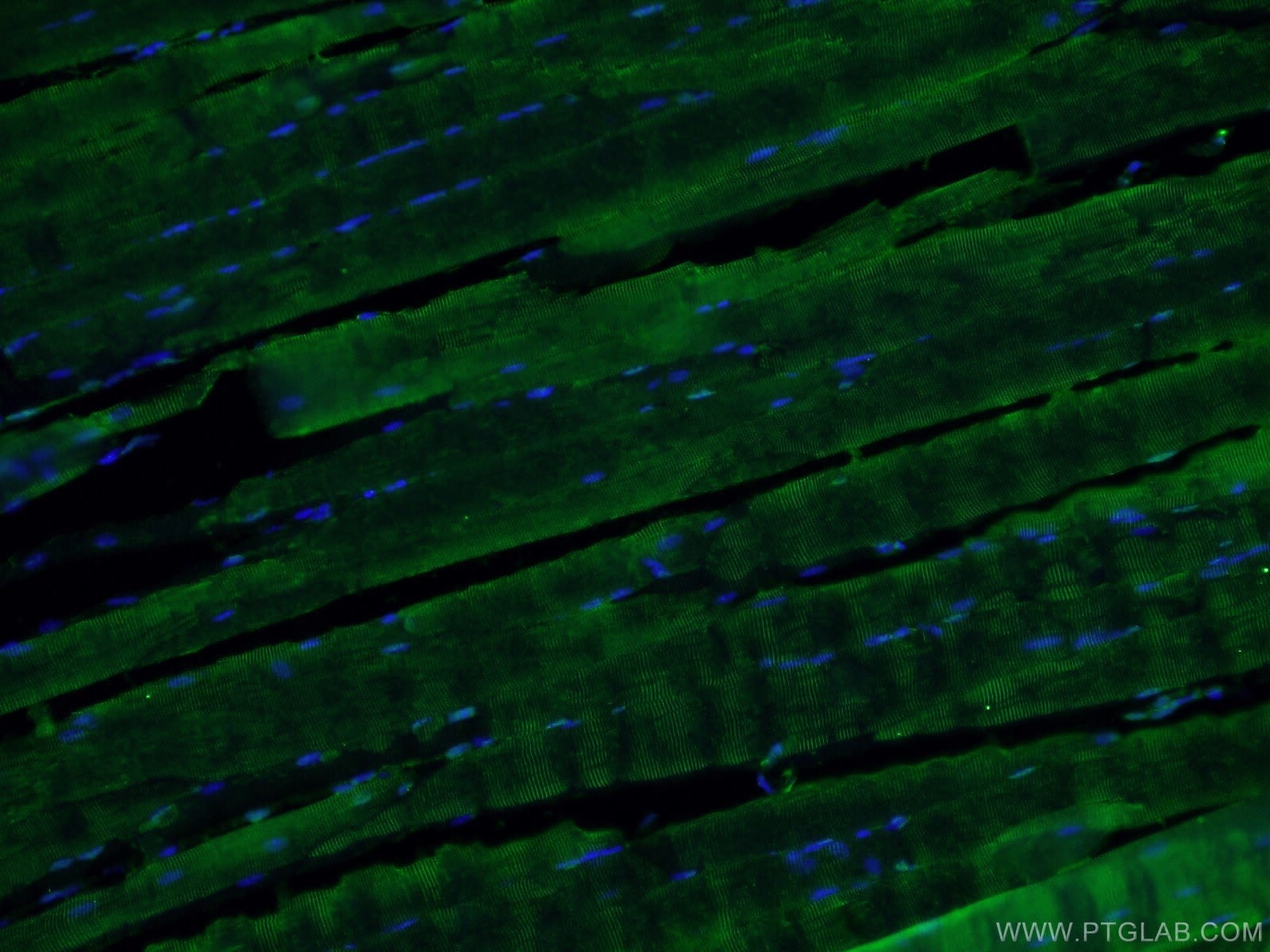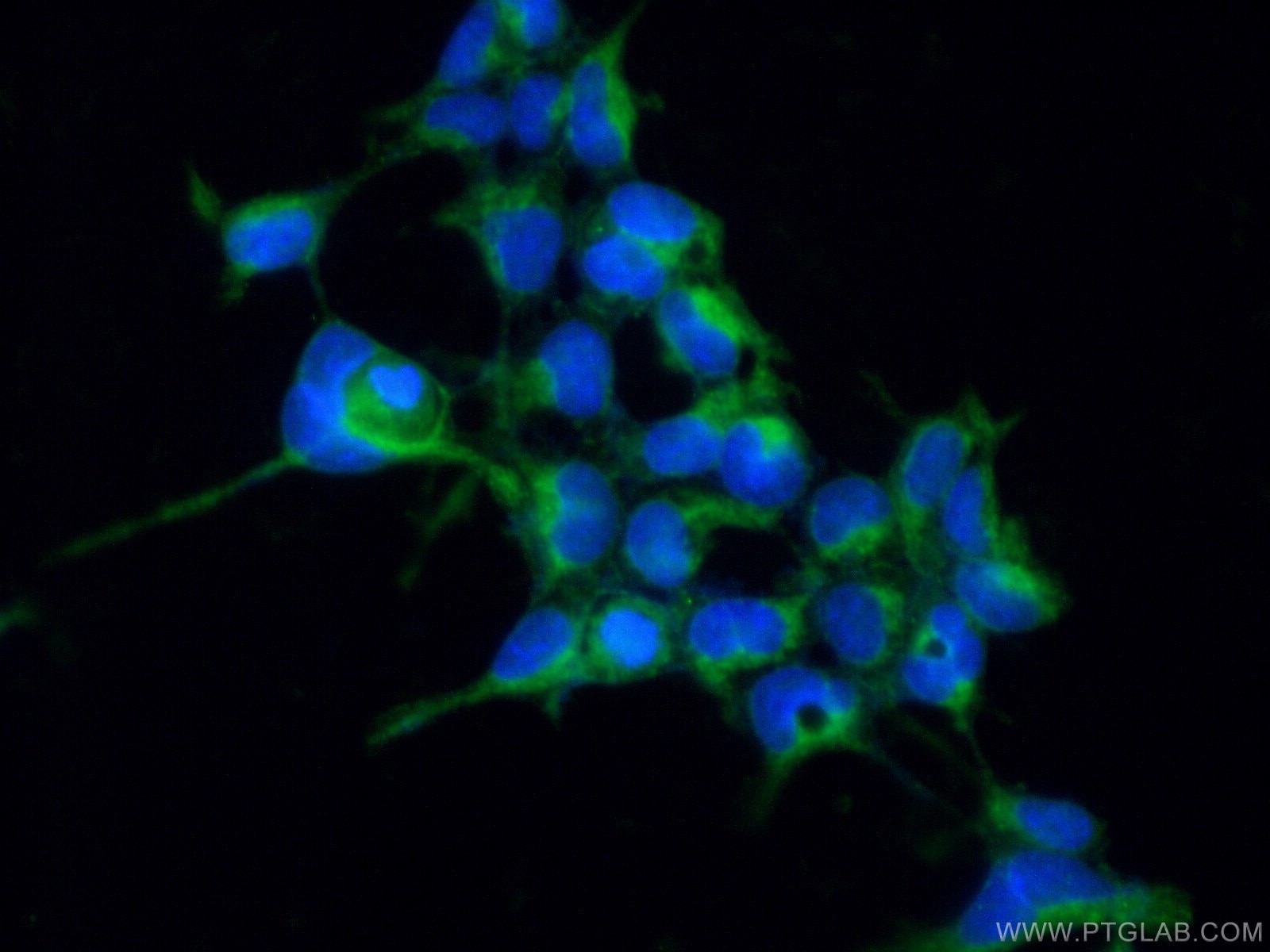- Phare
- Validé par KD/KO
Anticorps Polyclonal de lapin anti-ABLIM1
ABLIM1 Polyclonal Antibody for WB, IHC, IF/ICC, IF-P, ELISA
Hôte / Isotype
Lapin / IgG
Réactivité testée
Humain, rat, souris
Applications
WB, IHC, IF/ICC, IF-P, ELISA
Conjugaison
Non conjugué
N° de cat : 15129-1-AP
Synonymes
Galerie de données de validation
Applications testées
| Résultats positifs en WB | cellules HeLa, cellules HEK-293, cellules NCI-H1299 |
| Résultats positifs en IHC | tissu hépatique humain il est suggéré de démasquer l'antigène avec un tampon de TE buffer pH 9.0; (*) À défaut, 'le démasquage de l'antigène peut être 'effectué avec un tampon citrate pH 6,0. |
| Résultats positifs en IF-P | tissu de muscle squelettique de souris |
| Résultats positifs en IF/ICC | cellules HEK-293, |
Dilution recommandée
| Application | Dilution |
|---|---|
| Western Blot (WB) | WB : 1:1000-1:4000 |
| Immunohistochimie (IHC) | IHC : 1:20-1:200 |
| Immunofluorescence (IF)-P | IF-P : 1:50-1:500 |
| Immunofluorescence (IF)/ICC | IF/ICC : 1:50-1:500 |
| It is recommended that this reagent should be titrated in each testing system to obtain optimal results. | |
| Sample-dependent, check data in validation data gallery | |
Applications publiées
| KD/KO | See 3 publications below |
| WB | See 5 publications below |
| IF | See 2 publications below |
Informations sur le produit
15129-1-AP cible ABLIM1 dans les applications de WB, IHC, IF/ICC, IF-P, ELISA et montre une réactivité avec des échantillons Humain, rat, souris
| Réactivité | Humain, rat, souris |
| Réactivité citée | Humain, souris |
| Hôte / Isotype | Lapin / IgG |
| Clonalité | Polyclonal |
| Type | Anticorps |
| Immunogène | ABLIM1 Protéine recombinante Ag7258 |
| Nom complet | actin binding LIM protein 1 |
| Masse moléculaire calculée | 88 kDa |
| Poids moléculaire observé | 48-52 kDa, 105-110 kDa |
| Numéro d’acquisition GenBank | BC002448 |
| Symbole du gène | ABLIM1 |
| Identification du gène (NCBI) | 3983 |
| Conjugaison | Non conjugué |
| Forme | Liquide |
| Méthode de purification | Purification par affinité contre l'antigène |
| Tampon de stockage | PBS avec azoture de sodium à 0,02 % et glycérol à 50 % pH 7,3 |
| Conditions de stockage | Stocker à -20°C. Stable pendant un an après l'expédition. L'aliquotage n'est pas nécessaire pour le stockage à -20oC Les 20ul contiennent 0,1% de BSA. |
Informations générales
ABLIM1 (actin-binding LIM protein 1) is a member of the LIM-domain protein family, mediating interactions between actin filaments and cytoplasmic targets. ABLIM1 has been reported as a cell cortex protein specifically in non-erythrocytes, and is critical for the formation of dense interwoven cortical actin meshwork. Several isoforms of ABLIM1 exist due to the alternative splicing. This antibody recognized 110 kDa and 48 kDa forms of ABLIM1. The phosphorylation or binding with SUMO2 may result in higher MW (predicted MW 88 kDa).
Protocole
| Product Specific Protocols | |
|---|---|
| WB protocol for ABLIM1 antibody 15129-1-AP | Download protocol |
| IHC protocol for ABLIM1 antibody 15129-1-AP | Download protocol |
| IF protocol for ABLIM1 antibody 15129-1-AP | Download protocol |
| Standard Protocols | |
|---|---|
| Click here to view our Standard Protocols |
Publications
| Species | Application | Title |
|---|---|---|
Nat Cell Biol miR-129-3p controls cilia assembly by regulating CP110 and actin dynamics.
| ||
J Cell Physiol Actin binding LIM 1 (abLIM1) negatively controls osteoclastogenesis by regulating cell migration and fusion.
| ||
Int J Biol Sci Rictor promotes cell migration and actin polymerization through regulating ABLIM1 phosphorylation in Hepatocellular Carcinoma.
| ||
Mol Biol Cell Spatial proximity of proteins surrounding zyxin under force-bearing conditions. | ||
medRxiv Antigenic responses are hallmarks of fibrotic interstitial lung diseases independent of underlying etiologies | ||
Avis
The reviews below have been submitted by verified Proteintech customers who received an incentive forproviding their feedback.
FH Joleen (Verified Customer) (05-29-2019) | ABLIM should be around 87kD, but the 2 prominent bands do not come near that molecular weight. The top band is just above the 100kD molecular weight marker and the lower band is below the 75kD molecular weight marker. (BioRad Precision Plus Protein Standard used).
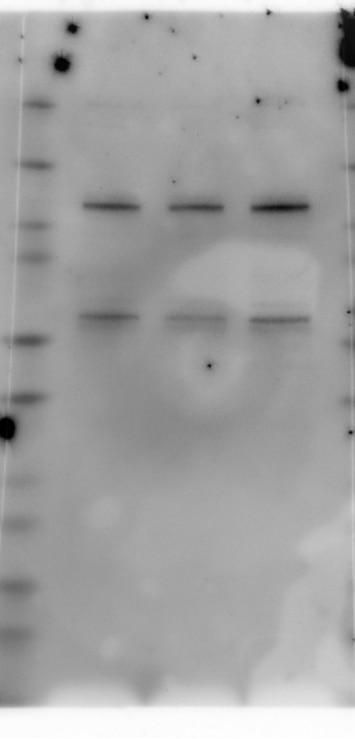 |
